The Southern Cone of South America, comprising Argentina, Chile, and Uruguay, boasts a rich culinary heritage that reflects the region’s history and cultural diversity. Nestled between the Atlantic Ocean and the Andes Mountains, this vibrant corner of the continent is known for its diverse range of traditional and contemporary dishes.
One of the defining features of Southern Cone’s gastronomy is its emphasis on quality ingredients. The region’s temperate climate and fertile soil allow for the cultivation of a wide variety of produce, including fruits, vegetables, and grains. This abundance of fresh, locally sourced ingredients forms the foundation of many traditional recipes.
Another key aspect of the Southern Cone’s culinary culture is its mastery of meat. Argentina, in particular, is renowned for its world-class beef, which is often grilled to perfection in the beloved asado tradition. Uruguay’s traditional barbecues and Chile’s hearty meat stews also showcase the region’s affinity for meat-based dishes.
European influences have also played a significant role in shaping the Southern Cone’s food culture. German immigrants, for example, brought with them a tradition of brewing beer, while Italian immigrants introduced pasta and gelato, which have become staples of the regional cuisine.
The Southern Cone’s coastal location has also influenced its culinary offerings. Chile’s extensive coastline provides an abundance of fresh seafood, including succulent salmon and delectable shellfish. Meanwhile, Uruguay’s iconic beachside chivito sandwiches are a testament to the region’s love for combining meat and seafood.
Key Takeaways:
- The Southern Cone of South America, comprising Argentina, Chile, and Uruguay, is known for its rich culinary heritage.
- The region’s temperate climate and fertile soil allow for the cultivation of high-quality produce.
- Traditional meat dishes, such as the Argentine asado and Uruguayan barbecues, are hallmarks of the Southern Cone’s cuisine.
- European influences, like German beer brewing and Italian pasta, have left lasting impressions on the region’s food culture.
- The Southern Cone’s coastal location provides a wealth of fresh seafood options, adding to the diversity of its culinary offerings.
History of Food in the Southern Cone
The history of food in the Southern Cone is a fascinating tapestry of cultural influences from indigenous populations, European immigrants, and other factors that have contributed to the region’s unique culinary traditions. A rich blend of flavours and ingredients, the cuisine of the Southern Cone reflects the diverse heritage of its people and the natural resources available in the region. From traditional dishes passed down through generations to modern innovations, the food of this area is a testament to the cultural richness of the Southern Cone.
The indigenous peoples of the Southern Cone, such as the Mapuche and Guarani, had a deep connection with the land and its resources. Their diets were centred around staple foods like corn, potatoes, and quinoa, which were cultivated in the fertile soils of the region. With the arrival of European immigrants in the 19th and 20th centuries, new ingredients and cooking techniques were introduced, transforming the culinary landscape of the Southern Cone. European staples like wheat, dairy products, and various meats became integrated into the local cuisine, creating a fusion of flavours that still influences the region’s food today.
One of the most prominent cultural influences on Southern Cone diets is the tradition of asado, a barbecue-style cooking method that originated with the gauchos, or Argentine cowboys. Asado is a social event that brings people together to share a variety of grilled meats, including beef, lamb, and pork, cooked over an open fire. This culinary tradition is deeply rooted in the history and identity of the Southern Cone, symbolizing the connection between its people and the land they inhabit.
Throughout history, the Southern Cone has also been influenced by the global trade routes and the exchange of goods. The arrival of ingredients like spices, coffee, and chocolate from distant lands has added new dimensions to the region’s cuisine. Today, the Southern Cone continues to evolve its culinary traditions, embracing modern innovations while preserving the essence of its rich heritage.
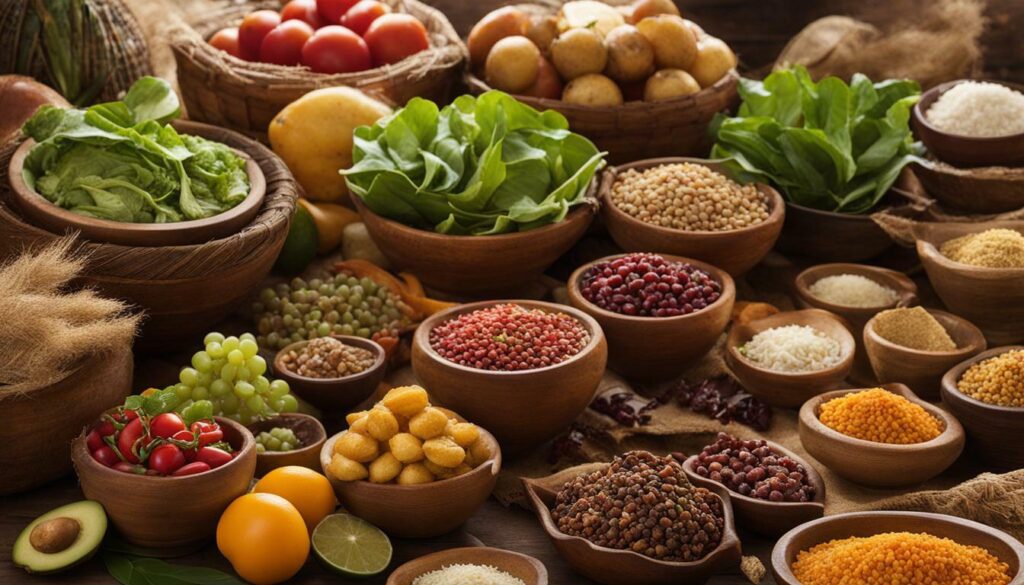
| Dish | Description |
|---|---|
| Asado | A traditional barbecue featuring various meats, such as beef, lamb, and pork. |
| Empanadas | Flaky pastries filled with meat, cheese, or vegetables are a popular snack throughout the region. |
| Dulce de Leche | A sweet, creamy caramel-like sauce used in desserts and confectionery. |
| Maté | A traditional herbal tea made from the leaves of the yerba maté plant, often shared among friends and family. |
From the vibrant flavours of asado to the indulgent sweetness of dulce de leche, the culinary history of the Southern Cone is a testament to the cultural richness and diversity of the region. As the Southern Cone continues to navigate the challenges of the modern food industry and embrace culinary innovations, its unique gastronomic heritage remains an integral part of its identity and a source of pride for its people.
Traditional Foods in the Southern Cone
The traditional foods of the Southern Cone are a reflection of the region’s cultural heritage, incorporating ingredients and recipes that have been cherished for centuries. Influenced by European immigrants and indigenous communities, Southern Cone cuisine boasts a diverse range of flavours and culinary traditions.
One of the most iconic dishes in the Southern Cone is the asado, a traditional barbecue that showcases the region’s love for meat. Grilled to perfection, the asado features cuts of beef, pork, and lamb, seasoned with salt and cooked over an open flame. It is a celebration of community and shared meals, often enjoyed with family and friends.

Seafood also plays a prominent role in Southern Cone cuisine, thanks to the region’s long coastline. The abundance of fresh fish, shrimp, and squid offers a variety of options for delicious seafood dishes. Cazuela de mariscos, a hearty seafood stew, is a popular choice, combining the flavours of the ocean with a rich tomato broth and a hint of spice.
To satisfy a sweet tooth, the Southern Cone offers delightful treats like dulce de leche and gelato. Dulce de leche, a caramel-like confection made from condensed milk, is a staple ingredient in many desserts, from alfajores (cookies filled with dulce de leche) to churros (fried dough pastries). Gelato, influenced by Italian immigration, is a cool and creamy treat enjoyed in a variety of flavours.
Culinary Traditions in the Southern Cone
The culinary traditions in the Southern Cone are deeply rooted in history and culture. The region’s diverse landscapes and agricultural practices have shaped the way people eat and cook. From the gauchos (cowboys) of the pampas to the indigenous Mapuche communities, each group has contributed to the rich tapestry of Southern Cone cuisine.
Table: Traditional Southern Cone Recipes
| Dish | Description |
|---|---|
| Asado | A traditional barbecue featuring various cuts of meat. |
| Empanadas | Savoury pastries filled with meat, cheese, or vegetables. |
| Matambre | A rolled, stuffed beef dish often served as an appetizer or main course. |
| Chimichurri | A sauce made from parsley, garlic, vinegar, and olive oil, often used as a marinade or accompaniment to grilled meats. |
| Milanesa | Breaded and fried meat cutlets, similar to schnitzel. |
These traditional recipes have stood the test of time, carrying stories and memories from one generation to the next. From hearty barbecues to comforting stews, the traditional foods of the Southern Cone continue to be enjoyed and celebrated today.
Evolution of Southern Cone Diets
The diets and cuisine of the Southern Cone have undergone significant evolution throughout history, influenced by factors such as migration, globalization, and changing dietary preferences. The region’s culinary traditions reflect a blend of indigenous, European, and African influences, resulting in a diverse and flavorful cuisine that is unique to this part of South America.
One of the key aspects of the Southern Cone’s culinary evolution is the introduction of new ingredients and cooking techniques. As European settlers arrived in the region, they brought with them a range of foodstuffs such as wheat, dairy products, and spices. These ingredients gradually integrated into traditional recipes, resulting in a fusion of flavours and the creation of new dishes.
Another significant factor in the evolution of Southern Cone diets is the changing dietary preferences of its inhabitants. With increasing urbanization and industrialization, convenience foods have become more prevalent, leading to a shift away from traditional cooking methods. However, there has also been a revival of interest in traditional cuisine in recent years, with a focus on using locally sourced and organic ingredients.
Overall, the evolution of Southern Cone diets has been shaped by a combination of historical, cultural, and social influences. The cuisine of the region continues to evolve as new ingredients and cooking techniques are introduced, while also retaining its rich culinary heritage. The Southern Cone’s commitment to preserving its traditional foods and culinary traditions ensures that future generations can enjoy the flavours and tastes that have defined this unique part of South America.
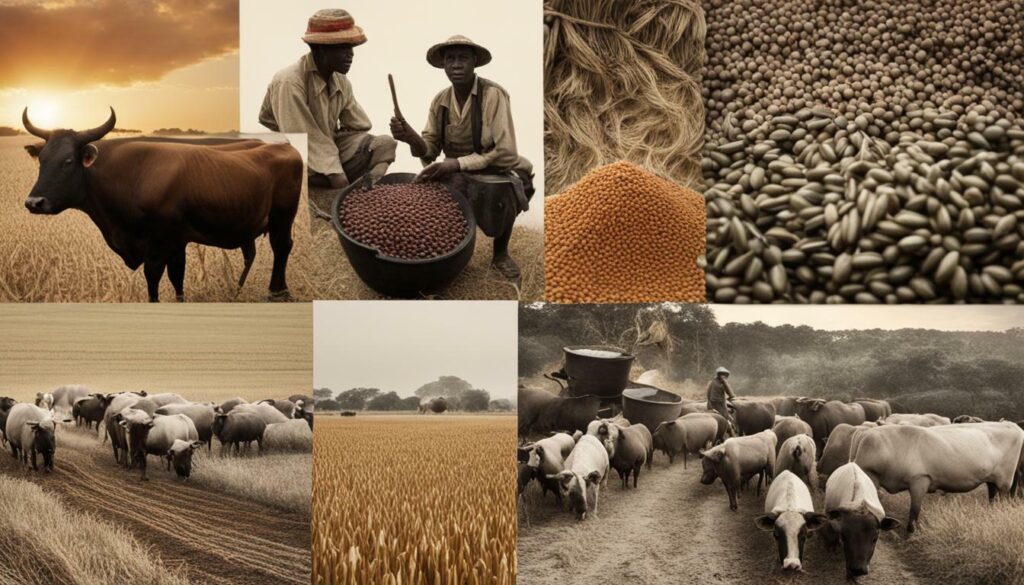
| Traditional Southern Cone Dishes | Key Ingredients |
|---|---|
| Asado | Beef, chimichurri sauce |
| Empanadas | Meat, cheese, vegetables |
| Matambre a la Pizza | Beef flank steak, cheese, tomato sauce |
| Locro | Corn, beans, meat |
| Chupe de Mariscos | Seafood, potatoes, cream |
| Dulce de Leche | Milk, sugar |
- European settlers brought new ingredients and cooking techniques to the region.
- Increasing urbanization has led to a shift towards convenience foods.
- There is a renewed interest in traditional cuisine using locally sourced ingredients.
- The culinary evolution of the Southern Cone reflects a blend of historical, cultural, and social influences.
“The fusion of traditional and new flavors has resulted in a cuisine that is both diverse and delicious.” – Chef Maria Rodriguez
Popular Southern Cone Dishes
From hearty asado barbecues to mouthwatering empanadas, the Southern Cone is renowned for its array of delicious and popular dishes that delight locals and visitors alike. This region’s cuisine is a blend of indigenous, European, and African influences, resulting in a diverse culinary landscape. Let’s explore some of the most beloved and iconic dishes that define the modern-day cuisines of the Southern Cone.
1. Asado:
Asado is the epitome of traditional Southern Cone cuisine. This mouthwatering barbecue features various cuts of beef, including ribs, sausages, and tenderloin, slow-cooked over an open flame. The result is tender, juicy meat with a rich smoky flavour. Asado gatherings are a social event, where friends and family come together to enjoy this beloved dish.
2. Empanadas:
No visit to the Southern Cone is complete without indulging in empanadas. These savoury pastries are filled with a variety of ingredients, such as beef, cheese, chicken, or vegetables. The dough is folded into a half-moon shape and baked or fried to perfection. Empanadas make a perfect snack or a satisfying meal, and each region adds its own unique twist to this classic dish.
3. Milanesa:
Popular in Argentina and Uruguay, milanesa is a breaded and fried meat cutlet, similar to the Italian dish, veal Milanese. Typically made with beef or chicken, the meat is pounded thin, coated in breadcrumbs, and fried until golden and crispy. Milanesa is often served with a side of mashed potatoes or a fresh salad, making it a comforting and satisfying meal.
| Dish | Country |
|---|---|
| Asado | Argentina, Uruguay, Chile |
| Empanadas | Argentina, Chile, Uruguay |
| Milanesa | Argentina, Uruguay |
These are just a few examples of the popular dishes that highlight the rich culinary heritage of the Southern Cone. Whether you’re a meat lover, a pastry enthusiast, or simply someone who appreciates flavorful cuisine, the Southern Cone has something to satisfy every palate.

With its vibrant food culture and diverse culinary traditions, it’s no wonder that the Southern Cone remains a top culinary destination for food lovers from around the world.
Staple Foods in the Southern Cone
The Southern Cone is characterized by several staple foods that are essential to its culinary identity, providing sustenance and nourishment to its inhabitants. These foods have been integral to the region’s cuisine for centuries, reflecting its rich cultural heritage and diverse agricultural resources.
One of the most significant staple foods in the Southern Cone is maize, or corn. Maize has been a dietary staple for indigenous populations in the region since ancient times. It is versatile and used in various traditional dishes, such as empanadas, humitas (corn tamales), and locro (a hearty stew). Its nutritional value and ability to adapt to different cooking techniques have made it a vital component of the Southern Cone’s cuisine.
Another staple food in the Southern Cone is beef. The region’s expansive grasslands make it ideal for cattle ranching, and beef has become an iconic ingredient in many traditional dishes. Asado, a traditional barbecue, is a prime example of how beef takes centre stage in Southern Cone cuisine. The slow-grilled cuts of meat, such as juicy steaks and succulent ribs, are enjoyed by locals and visitors alike.
In addition to maize and beef, yerba mate is another staple in the Southern Cone. This traditional South American herbal tea is consumed daily by many in Argentina, Uruguay, and southern Brazil. Its unique flavour and energizing properties make it a beloved beverage in the region. Yerba mate is often enjoyed socially, as friends and families gather around a shared gourd to share the tea.
These staple foods, along with others such as potatoes, beans, and wheat, form the foundation of Southern Cone’s cuisine. They represent the history, culture, and traditions of the region, and continue to shape the culinary landscape to this day.

| Staple Foods | Descriptions |
|---|---|
| Maize (Corn) | A versatile grain used in traditional dishes like empanadas, humitas, and locro. |
| Beef | Agricultural resources |
| Yerba Mate | A traditional herbal tea consumed daily in Argentina, Uruguay, and southern Brazil. |
| Potatoes | A versatile tuber widely used in various dishes and side dishes. |
| Beans | A protein-rich legume that is a staple ingredient in stews and bean-based dishes. |
| Wheat | A primary cereal grain used in bread, pastries, and pasta. |
Southern Cone Food Culture
The food culture of the Southern Cone is deeply rooted in its history, geography, and social customs, shaping the dietary practices and habits of its people. This region, consisting of Argentina, Chile, and Uruguay, boasts a diverse culinary heritage that reflects the influences of indigenous cultures, European colonization, and immigration from various parts of the world.
One of the defining features of the Southern Cone food culture is the emphasis on high-quality ingredients sourced from the region’s natural resources. The temperate climate and fertile land provide an abundance of fresh produce, including fruits, vegetables, and grains. Additionally, the vast grasslands of the Southern Cone are home to cattle, allowing for the production of exceptional beef, which is a staple of the local cuisine.
The cultural importance of food is evident in the traditional practices and customs surrounding mealtime. Sharing a meal with family and friends is a cherished social ritual, often accompanied by lively conversations, laughter, and a sense of togetherness. The Southern Cone food culture also values the art of cooking, with many recipes passed down through generations and carefully preserved to maintain their authenticity.
Furthermore, the Southern Cone’s food culture is heavily influenced by European traditions, especially those of Italy and Spain. Italian immigrants brought with them their love for pasta and pizza, which have become beloved dishes in the region. Spanish influences can be seen in the consumption of paella and tapas, showcasing the diversity of flavours and culinary techniques within the Southern Cone.
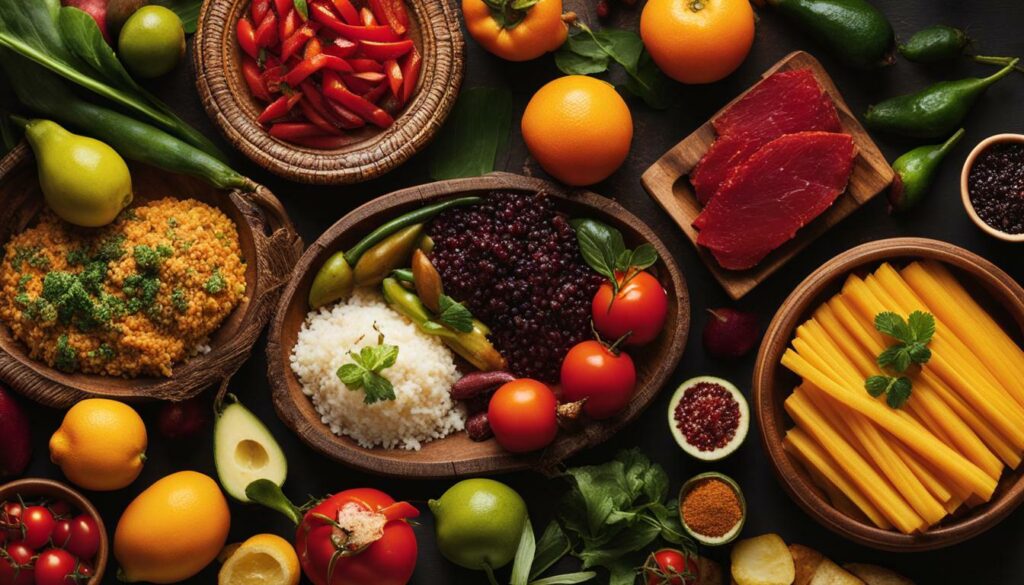
| Traditional Southern Cone Dishes | Ingredients | Cultural Significance |
|---|---|---|
| Asado | Beef, chorizo, morcilla (blood sausage) | A symbol of cultural identity and social gathering |
| Empanadas | Pastry dough, various fillings like meat, cheese, or vegetables | A popular snack enjoyed during special occasions and festivals |
| Dulce de Leche | Milk, sugar | A sweet and creamy caramel spread used in desserts and confections |
| Chimichurri | Parsley, garlic, oregano, vinegar, oil | A tangy sauce often paired with grilled meats |
The Southern Cone food culture is diverse, vibrant, and deeply ingrained in the daily lives of its people. From hearty barbecues to delicate pastries, the region’s cuisine celebrates the rich flavours and cultural heritage that have shaped its identity. As the Southern Cone continues to evolve, its food culture remains a testament to the region’s resilience, adaptability, and passion for culinary traditions.
The Southern Cone Nutrition
The Southern Cone diet offers a balance of nutrient-rich ingredients and flavours, contributing to the overall health and well-being of its population. With a culinary heritage influenced by European traditions and abundant natural resources, the Southern Cone region of South America, comprising Argentina, Chile, and Uruguay, boasts a diverse and nutritious food culture.
The diet of the Southern Cone is characterized by the consumption of high-quality beef, which is renowned worldwide for its taste and texture. The region’s temperate climate and vast grasslands provide ideal conditions for cattle rearing, resulting in lean cuts of meat rich in protein, iron, and essential amino acids. Additionally, the Southern Cone is home to extensive vineyards, producing excellent wines that complement the local cuisine.
Due to its long coastline, the Southern Cone enjoys an abundance of fresh seafood. While a significant portion of the catch is exported, the local population also benefits from a variety of fish and shellfish rich in omega-3 fatty acids, vitamins, and minerals. The consumption of seafood contributes to a well-rounded diet in the region.
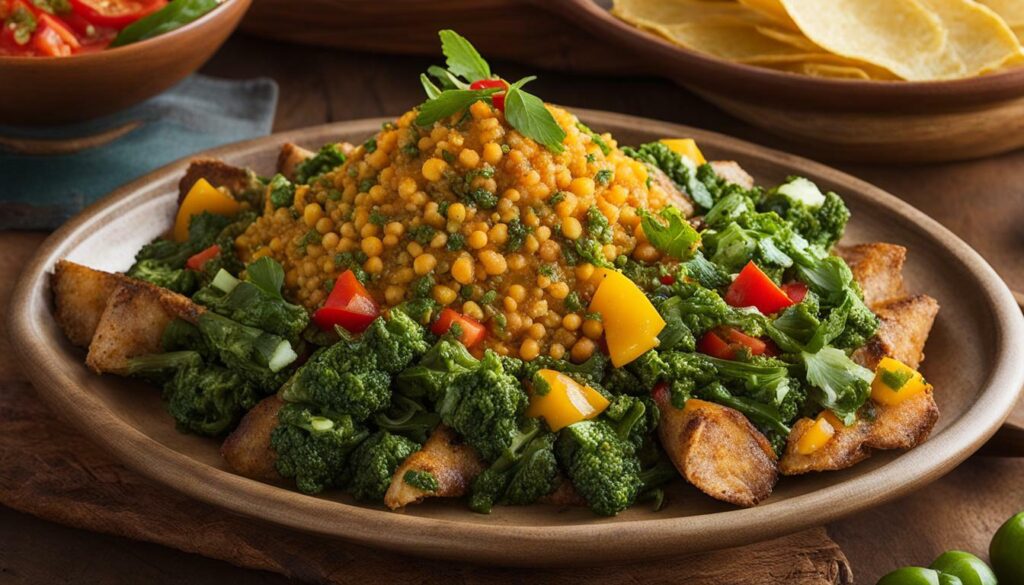
The Southern Cone’s strong European influence is evident in its desserts. Popular treats such as dulce de leche, a caramel-like confection made from condensed milk, and gelato, a creamy Italian-style ice cream, are enjoyed by locals and visitors alike. These indulgent desserts add a touch of sweetness to the Southern Cone’s culinary offerings.
Traditional Southern Cone Foods
Traditional Southern Cone foods reflect a mix of indigenous ingredients and European culinary traditions. A staple of the region is the asado, a traditional barbecue featuring various cuts of meat cooked on an open flame. This communal dining experience brings friends and family together to enjoy the flavours and aromas that permeate the air during the cooking process.
| Traditional Southern Cone Foods | Description |
|---|---|
| Empanadas | Savoury pastries filled with meat, cheese, or vegetables. |
| Locro | A hearty stew made with corn, beans, meat, and vegetables. |
| Chimichurri | A tangy sauce made with parsley, garlic, vinegar, and olive oil, used as a condiment for grilled meats. |
| Matambre | A rolled beef dish stuffed with vegetables, herbs, and spices. |
| Alfajores | Buttery cookies sandwiched together with dulce de leche and dusted with powdered sugar. |
The Southern Cone’s culinary traditions offer a harmonious blend of flavors, textures, and cultural influences. From the succulent asado to the tempting dulce de leche, the region’s cuisine is both a celebration of its heritage and a reflection of its fertile lands.
Despite the many benefits of the Southern Cone diet, the region faces challenges in maintaining its food culture. The financialization of the food industry, along with the negative environmental impacts of soybean cultivation, poses risks to the traditional practices and sustainability of the Southern Cone’s agri-food system. However, through continued appreciation and support for local producers and traditional foodways, the Southern Cone can navigate these challenges and preserve its rich culinary heritage for generations to come.
In conclusion, the Southern Cone’s nutrition is a testament to the region’s natural resources and cultural diversity. With its nutrient-rich ingredients, delectable flavours, and time-honoured traditions, the Southern Cone diet offers a unique and wholesome culinary experience that contributes to the overall well-being of its population.
Challenges and Future of Southern Cone Diets
Despite its rich culinary heritage, the Southern Cone faces several challenges in preserving its traditional diets and food culture, including the financialization of the food industry and the environmental impacts of soybean cultivation. The region’s agri-food system has undergone significant changes in recent years, with large corporations gaining control over food production and distribution. This consolidation has led to the prioritization of profit over traditional food practices, resulting in the loss of small-scale farmers and local food markets.
One of the main challenges faced by the Southern Cone is the detrimental environmental impact of soybean cultivation. The expansion of soybean plantations has led to deforestation, soil degradation, and the loss of biodiversity. While soybean production may be economically beneficial, it has come at the cost of traditional agricultural practices and the preservation of native ecosystems.
To ensure the future of Southern Cone diets, there is a need to prioritize sustainable and regenerative agricultural practices. This includes supporting small-scale farmers and local food systems, promoting organic farming methods, and investing in agroecology. By diversifying agricultural production and reducing reliance on monocultures like soybeans, the region can protect its culinary traditions and preserve its unique food culture for future generations.

Moreover, promoting education and awareness about the cultural and nutritional value of traditional Southern Cone diets is essential. By highlighting the importance of local ingredients and traditional cooking techniques, individuals can make informed choices about their food consumption and support local producers.
Looking ahead, the future of Southern Cone diets lies in finding a balance between tradition and innovation. While it is important to preserve culinary heritage and traditional recipes, there is also room for culinary innovations that respond to evolving dietary preferences and global food trends. By embracing new ingredients, flavours, and cooking methods, the Southern Cone can continue to captivate food enthusiasts while staying true to its rich culinary roots.
Summary:
- Despite its rich culinary heritage, the Southern Cone faces challenges in preserving its traditional diet and food culture.
- The financialization of the food industry and the environmental impacts of soybean cultivation pose significant challenges.
- Promoting sustainable agricultural practices and supporting local food systems is crucial for the future of Southern Cone diets.
- Educating and raising awareness about the cultural and nutritional value of traditional diets is essential.
- Embracing culinary innovation while preserving culinary heritage is key to the region’s future success.
Table:
| Challenges | Solutions |
|---|---|
| Financialization of the food industry | Support small-scale farmers and local food systems |
| Environmental impacts of soybean cultivation | Promote sustainable and regenerative agricultural practices |
| Loss of traditional agricultural practices | Invest in agroecology and organic farming methods |
| Preserving native ecosystems | Diversify agricultural production and reduce reliance on monocultures |
Culinary Innovations in the Southern Cone
The Southern Cone continues to embrace culinary innovations, blending tradition with modern techniques to create exciting new dishes and flavours that captivate food enthusiasts. This region, encompassing Argentina, Chile, and Uruguay, is renowned for its rich culinary heritage, which has evolved over time and been influenced by various cultures. From sizzling asados to delectable desserts, the Southern Cone offers a diverse array of culinary delights.
One notable culinary innovation in the Southern Cone is the fusion of traditional ingredients with contemporary cooking methods. Chefs in the region are exploring new ways to highlight local produce by incorporating international cooking techniques. This creative approach can be seen in dishes like Patagonian lamb confit served with a quinoa salad or Chilean sea bass ceviche infused with yuzu and ginger. By combining the flavours of the land and sea with modern cooking techniques, these innovative dishes offer a fresh take on traditional Southern Cone cuisine.
Another culinary trend in the Southern Cone is the rise of sustainable and farm-to-table practices. With growing concerns about the environmental impact of food production, many chefs and restaurants in the region are prioritizing locally sourced and organic ingredients. This focus on sustainability not only benefits the environment but also allows for the use of seasonal produce, resulting in dishes that are both flavorful and environmentally conscious.
| Traditional Southern Cone Dishes | Culinary Innovations |
|---|---|
| Asado | Smoked Asado with Chimichurri Foam |
| Empanadas | Quinoa and Roasted Vegetable Empanadas |
| Milanesa | Panko-Crusted Milanesa with Lemon Aioli |
| Alfajores | Almond and Dulce de Leche Alfajores |
The Southern Cone’s commitment to culinary innovation is also reflected in its vibrant street food scene. Food trucks and markets have become hubs of gastronomic experimentation, offering a platform for local chefs to showcase their innovative creations to a wider audience. From gourmet choripanes (grilled chorizo sandwiches) to artisanal ice cream infused with regional fruits, these street food offerings embody the fusion of tradition and contemporary flavours that define the Southern Cone culinary landscape.
As culinary trends continue to evolve, the Southern Cone remains at the forefront of innovation, constantly pushing the boundaries of traditional cuisine. By embracing a blend of tradition and modern techniques, chefs in the region are creating a culinary experience that celebrates the rich heritage of the Southern Cone while embracing the flavours of the future.
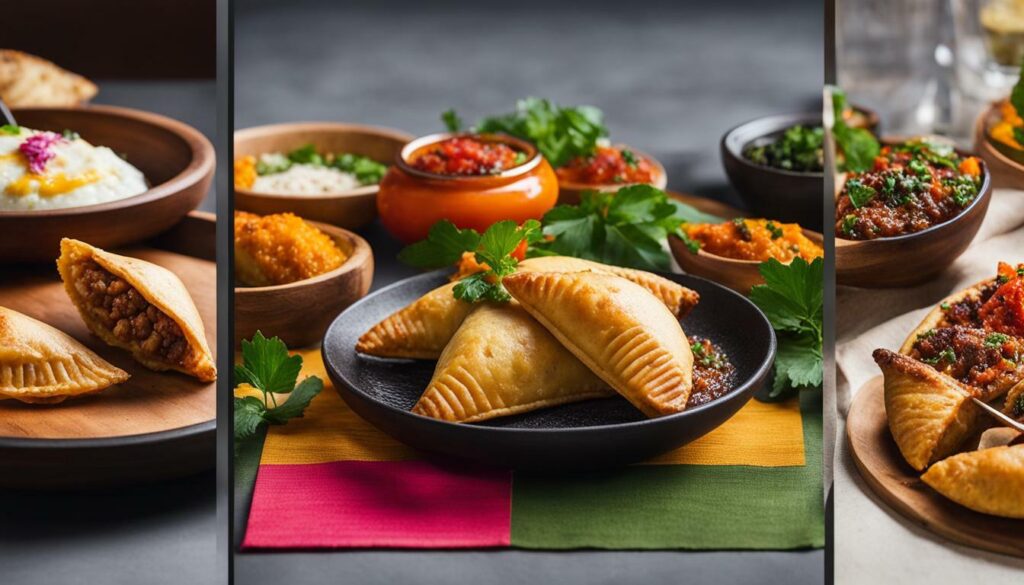
In conclusion, the past and present diets of the Southern Cone are a testament to the region’s rich history, cultural diversity, and vibrant culinary traditions. The Southern Cone, encompassing Argentina, Chile, and Uruguay, is renowned for its exceptional cuisine, with a mix of indigenous, European, and immigrant influences.
The region’s temperate climate and vast grasslands have fostered the production of high-quality beef, establishing the Southern Cone as a global leader in meat exports. The traditional asado, a mouthwatering barbecue featuring various cuts of meat, is a beloved culinary tradition in Uruguay, capturing the essence of the region’s gastronomy.
Moreover, the Southern Cone’s wine production has gained international recognition, with Argentina and Chile producing some of the finest wines in the world. The region’s long coastline also provides an abundance of fresh seafood, which adds a delightful touch to its culinary offerings.
However, despite its culinary prowess, the Southern Cone’s agri-food system faces significant challenges. The financialization of the food industry and the negative environmental impacts of soybean cultivation pose threats to the region’s sustainable and diverse food culture. It is crucial for the Southern Cone to navigate these challenges while preserving its rich culinary heritage and embracing innovative approaches to ensure a prosperous future for its diets and cuisine.
FAQ
What is the Southern Cone?
The Southern Cone refers to the southernmost region of South America, which includes countries such as Argentina, Chile, and Uruguay.
What is the cuisine like in the Southern Cone?
The cuisine in the Southern Cone is known for its high-quality beef, extensive wine production, fresh seafood, and European-influenced desserts.
What is asado?
Asado is a traditional barbecue style in the Southern Cone, where various meats are grilled over an open flame.
Which countries are known for wine production in the Southern Cone?
Argentina and Chile are renowned for their wine production in the Southern Cone.
What are some traditional desserts in the Southern Cone?
Traditional desserts in the Southern Cone include dulce de leche and gelato, which have strong European influences.
What are the challenges facing the Southern Cone’s agri-food system?
The challenges include the financialization of the food industry and the negative environmental impacts of soybean cultivation.
Source Links
- https://www.zum.de/whkmla/sp/1011/sheherezade/ysa1.html
- https://www.textbooktravel.com/food-of-argentina-chile-and-uruguay/
- https://www.mdpi.com/2071-1050/11/24/7011
Read Our Articles On The Other Regions of South America Here:
| Past and Present Diets of the Andeans |
| Past and Present Diets of the Amazon Basin |
| Past and Present Diets of the Guianas |



